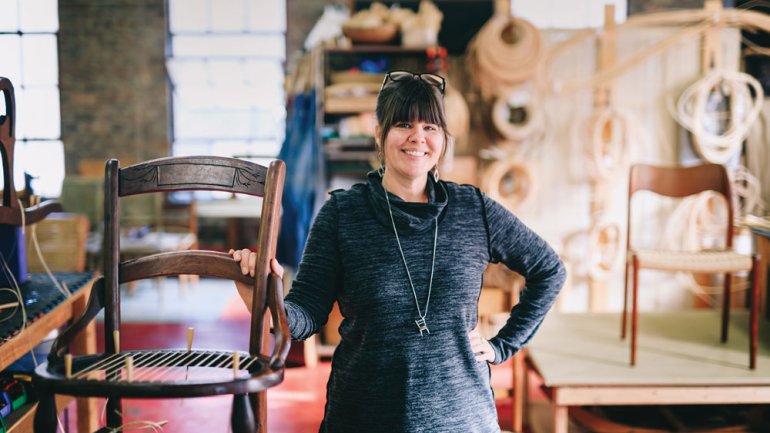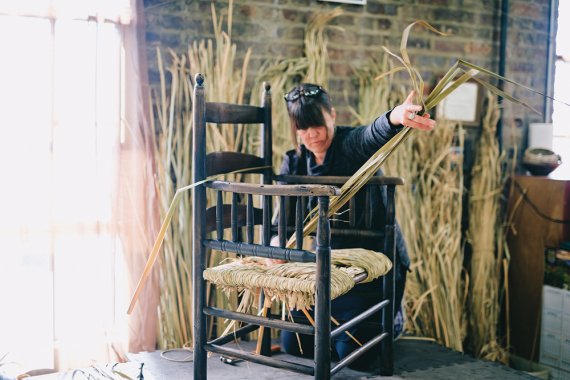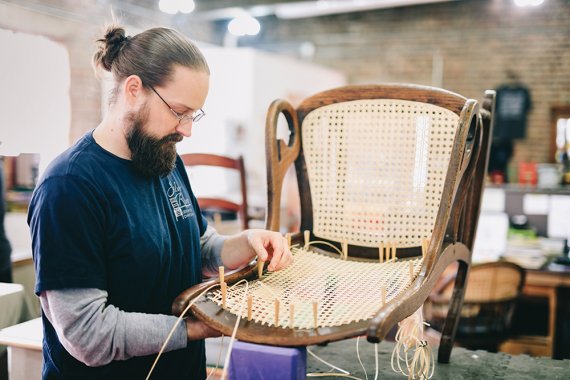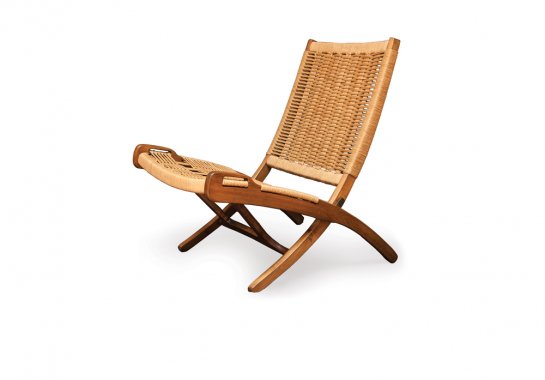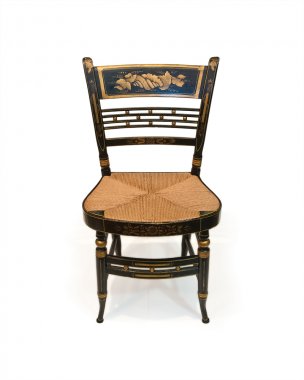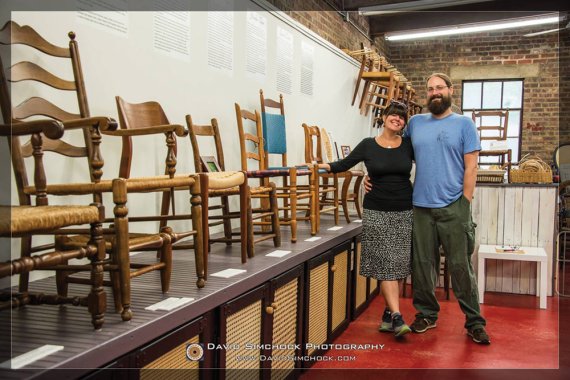Cane Clan
Cane Clan
Brandy Clements didn’t imagine she’d end up with a passion for historic furniture, just like her father.
“When I was growing up, any time we’d go anywhere, my dad would visit antique stores. What kid is interested in antiques? It’s just something I took for granted,” she says. “His house was like a museum. Barley twist chairs and cane furniture everywhere, and lots and lots of clocks.”
With her husband, Dave Klingler, Clements now runs just the kind of business her father would have loved – the Silver River Center for Chair Caning in Asheville, North Carolina, which the couple says is the country’s only dedicated chair-caning school and museum.
Visitors can stop by to check out the free exhibit of caned chairs, sign up for a three-hour crash course in handwoven caning and rush weaving, or stay a couple of weeks for a caning boot camp, which covers handwoven and machine caning in styles that might include rush, splint, and Shaker tape.
Clements, 42, who spent her childhood in South Carolina, earned her degree in exercise science before hitting the road for a few years, waitressing in Utah, Oregon, and Washington.
When she moved back east in 2005, her father encouraged her to learn chair caning from his sister, Linda Clements. “He said I could make a couple hundred a month on the side, and that sounded good to me,” says Clements, who is the fourth generation on her father’s side to work in the trade. “Even for the first couple years, it was like, this is a fun project. I just fixed this little chair.”
Repair orders grew from a trickle to a flood, so Clements asked Klingler, whom she had been dating, if he could help out. (“I lucked out with Dave’s chair skills,” she says.) They moved from South Carolina to Asheville in 2007, and in 2010, opened a small caning studio.
For another revenue stream and to provide some physical relief, the duo later added caning classes to their business. “We spend a lot of money at chiropractors and for massage therapy,” Clements says. “I had a shoulder thing that lasted for a year. A lot of caners will quit doing rush weaving because of pain in their shoulder and forearms.”
In 2015, they expanded again, opening their combined museum, school, and restoration shop in a renovated industrial building five times the size of their first space. There, visitors can see chairs dating from the mid-1700s to now, plus the “chair wall,” with labels explaining eight types of seat weaving. They can also observe classes if those happen to be in session.
As she built her career, Clements grew into a self-described “chair nerd,” soaking up the history of caning and reaching out to fellow caners both near and far. In 2015, she traveled to England to meet caning scholars and view chairs. The following year, she hosted the annual SeatWeavers’ Guild conference in Asheville, which attracted more than 90 caners from around the country. Her dream is to go on a “world chair-caning tour,” to meet caners around the globe and research caning cultures.
“Dave is more into the process and tools, and I really get off on the history,” Clements says. “People think caning is an Appalachian craft, but it’s been around for thousands of years. There were caned chairs in King Tut’s tomb.”
She wants to elevate the craft from the “back in the time” category. “If we call it a lost art, it’s going to be a lost art,” she declares.
Beyond history and craft, there’s an emotional element to her work. Her father died unexpectedly soon after she first learned to cane, but he reconnected Clements to her aunt, with whom she maintains a deep and lasting relationship.
She’s seen a similar connection beyond her own family.
“We had this one woman who had her dad’s chair recaned to give to her grandchildren. When she saw it, she just burst into tears. It’s so special to see that attachment to your ancestors carried forward.”


